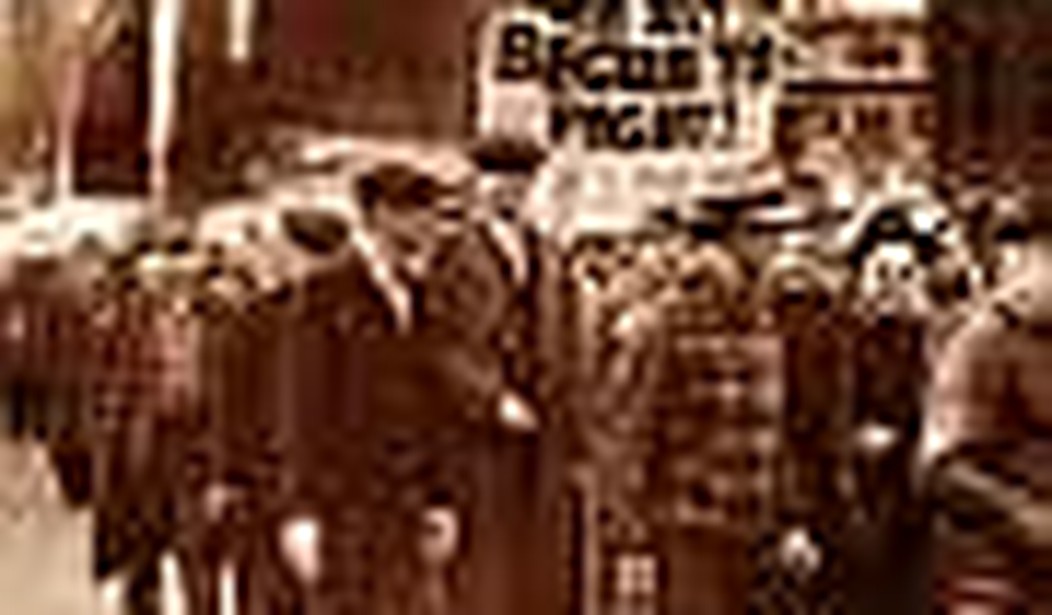Thank a union member.
That’s what Sam Abuelsamid of Autoblog wants us to do. While rightly debunking the myth of $70/hr autoworkers, Sam waxes prosaic about the debt we all owe organized labor. Paraphrasing the recently departed Studs Terkel, Abuelsamid asks union critics:
Do you like going home from work at 5 o’clock? Do you like having health care benefits? Do you like having paid time off? You may not be in a union, but if you have any of that, you can thank union workers for it. Before unions fought for reasonable workweeks, health care, and workplace safety in the first half of the twentieth century, few Americans had any of that. Don’t kid yourself that big corporations would give you would get any of that from the goodness their hearts.
Terkel was a great storyteller, but most of that is a fairy tale, a foundational myth of organized labor.
The labor movement had little success organizing U.S. industries, particularly the auto industry, until the 1930s. The CIO was founded in 1935, in response to the AFL’s emphasis on skilled craft unionists. While attempts to organize autoworkers date to the industry’s birth, the auto companies were not fully organized until the late 1930s. The legendary UAW Flint sit-down strike and the “Battle of the Rouge Overpass” both took place in 1937.
Meanwhile, labor and auto industry historians say that wages, benefits, and working conditions for American workers had started improving decades earlier.
In 1911, Henry Ford said, “Coming [is] a shorter workday, and so is the daily wage. It will be a daily wage of five dollars, perhaps as much as ten dollars, and maybe more. We are just beginning to get moving in the automobile industry, and the men who build the cars are entitled to better wages and better hours.”
Two years later Ford Motor Co. started an embryonic employee health plan, with company clinics for on the job injuries, employees, and their families. The company health department also placed the many handicapped workers Ford hired in suitable positions and in some cases monitored their health.
In 1914, Ford shocked the world, announcing a wage increase from $2.34 to $5.00 per day. The increase was paid as a bonus to men who met Ford’s standards for sober living as verified by Ford Motor Company’s Sociological Department and Harry Bennett’s spies. Henry, meanwhile, would quietly putter up the Rouge from Fairlane in an electric motorboat, docking at a secret staircase in the mansion he built for a young stenographer who joined the company in 1909.
Obviously Ford was no saint. He raised wages out of pure self-interest. His factories were terrible places to work. The new assembly line was mind numbing, backbreaking drudgery. Hundreds lost fingers or limbs in presses and stamping machines every year. Factories were noisy and dirty and the line moved brutally fast, with no breaks. Supervisors had stopwatches. No wonder there was a 10% absentee rate and a turnover rate as high as 370%. In 1913, Ford Motor Company hired over 52,000 men to keep 14,000 employees, something a business model based on productivity could not afford.
The $5 wage stabilized Ford’s workforce. What’s not widely known is that at the same time Ford also shortened the workday. An eight hour day meant the plants could run three shifts, 24 hours a day, speeding production and reducing costs. In 1922, Ford shortened the workweek from the industrial standard of 50 hours, including half a day on Saturday, to a five-day, 40-hour week. That way, with overtime, he could run full shifts on the weekend and keep his plants busy 24/7/365. I’m sure that if Ford had known that safety increased productivity, Henry would have made the plants safer.
Even concerning safety and working conditions, unions’ benefit to non-union workers is somewhat exaggerated. Once again, one can never underestimate the power of selfish interests. E.I. DuPont started a gunpowder mill on the banks of the Brandywine in 1802. He faced some of the same difficulties Henry Ford did in attracting and keeping workers. It was dangerous work. DuPont did something as clever as Ford’s $5 a day wage. He told his employees that if they were killed on the job he’d support their families, perhaps inventing employee life insurance. Then, instead of one large mill, he built several small mills with three stone walls and a fourth of wood facing the river, each designed for one stage of production. In case there was an explosion the wooden panel would blow out towards the river, leaving the walls standing and keeping the explosion from spreading to the entire operation. He also trained his employees to be very, very safe. To this day, “safety first” is DuPont corporate culture. Like Ford, DuPont was no saint, making his fortune from war. He stressed safety because mills were expensive to rebuild, and widows and orphans expensive to support.
Ford and DuPont didn’t act out of the goodness of their hearts. Neither did unions, whose primary accomplishment has been giving individual employees economic leverage, not making the world a better place.
I don’t owe unions any more thanks than I owe Hank and E. I.









Join the conversation as a VIP Member